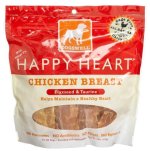Tensions and emotions have been running high recently due to the DKBL dog catching scandal. Accusations and allegations have been flung, and denials and evasions attempted. The SPCA have tried to position themselves as impartial observers and the ‘pet-loving public’ are in a state of grand agitation.
For the benefit of those who are unaware of the background of the story, here’s an extremely brief summary. The DBKL pound workers were accused, by concerned members of the public, of using inhumane methods to catch and dispose of stray animals. A local TV crew got footage of a dog being roughly dragged out of a van using a loop on a pole. Animal rights protestors went into hyper-drive and the local council spokesperson reacted with the typical Malaysian-Evasion tactic.
While media focus seems to have petered out, the forums are rife with bilious exchange on the barbaric nature of ‘those people’. This has also spawned an emotional discussion on how UPM Veterinary Science students use dogs from the DBKL pound for surgery practise, etc. Somewhere, a letter from a concerned parent was posted expressing their distress at how wrong the idea seemed- vet students studying to save animals lives hurting animals in the name of education. Predictably, more rousing discussion followed.
I have opted to avoid these discussions as local forum-ers can be rather tense. Any opinion contrary to one’s own is often taken as criticism rather than a different perspective. However, here on our own space, I can share our opinion, us being the people who run Pet Epicure; retail outlet, animal shelter and the owners of Dragostea Ragdolls.
SPCA
People often compare us to SPCA and say we are much better because we are (so far) a no kill shelter. However, we are an independent family run unit that turns away at least a cat a week. We have that luxury. The SPCA does not. And decisions are mulled over and made between us girls. We have no board of directors or trustees or committee to answer to. We have made mistakes but it is for us to learn from. Accountability starts and ends with a mere four people.
While it is tragic that the SPCA has to put down so many healthy animals, what would you have them do? I speak from experience. Ordinary brown mongrels rarely get adopted. Local cats with kinked tails are not popular. Black ones even more so! Until people change their mindset and choose their pets based on personality rather than appearances, shelters have little option but to euthanize those with poor chances of being adopted. Otherwise, the SPCA would merely become a holding place for hundreds and thousands of unwanted animals. And before you shout, “But why not just keep them there?” spare a thought for the animal. Each living creature wants for a few things; food, shelter and quality of life. Does being in prison for the rest of your natural life appeal to you? I will assume not.
Hence, while it is possible to neuter them and keep them all alive, it is not always in the animal’s best interest. This does not by any means indicate that euthanasia is the only answer. Or even a good answer. It is merely a request that you consider the issue, not only from our human humane perspective, but also from the perspective of the animals who may live the rest of their lives in a cage (no matter how large, comfortable or well appointed) and the people who have chosen to devote their lives to the cause of unwanted animals.
I’m not sure how to conclude this without laying myself open to lots of criticism. However, I will openly admit that we have released a few cats after deeming them unsuitable for re-homing. We have taken care to release them near our homes so they can come for food and help should their need or want it. Again, this is not an option the SPCA has because of the way they function. We have yet to euthanize an animal but we have been close to it. And we constantly wonder if our black cats will ever find homes….
DBKL
Our thoughts on this matter are very simple. DBKL would have a hell of a lot less strays to round up and destroy if the wonderful animal lovers and pet owners of Malaysia would JUST NEUTER THEIR PETS! At least half of the animals in the DKL pound have some purebred blood behind them. They exist because Ah Beng and Mike across the street let their beloved INTACT pedigree pet roam and contribute their genes to the stray population. True mongrel populations of the brown variety are checked by harsh living conditions.
All councils in Malaysia should impose a license fee of RM500 per intact pet over 9 months of age and a mere RM5 for neutered pets. Furthermore, restrictions should not be made on the number of pets you keep provided they are neutered. However, the number of intact pets should be regulated according to the amount of space available. This instantly makes people neuter their pets, think twice about breeding and makes it easier for people to take in unwanted animals. Granted the logistics may prove a challenge, but if we can put a monkey in space, surely this is a small thing?
Finally, I don’t think anyone (sane) gets out of bed in the morning thinking, “Let’s see how many animals I can torture today.” And before you cast the first stone, can you be absolutely sure you have not contributed to the stray problem? The man wielding the pole may be demonstrating cruelty to animals overtly but what about us? Have we directly or indirectly contributed to the problem? And even if our contribution is of an indirect variety (For example, a friend of mine lost his dog. It ran away with a pack of strays. It was not yet neutered. Chances were that that dog would’ve lived to reproduce and contribute to the stray population), does it make us less culpable?
UPM
My sister recently graduated from the University of Queensland as a Veterinary Doctor. Almost two years ago, she called, depressed. She was dreading the next semester and did not know if she would be able to continue. Her heart rebelled at what was required of her but in the end she saw it through and she is now regarded as a potentially talented surgeon. Yes. She too had to practise surgery on live animals. These animals were also from the local shelter. They had failed to be rehomed and were fated to be donated to the University for teaching and research. I’ll not go into the gory details but tell you this instead. Teaching someone something from a book is not the same as showing someone how it is done and letting them do it for themselves. Hence the old adage about giving the fisherman a net versus fish.
While the whole ordeal sickens me, I can see the necessity. I could not, and still cannot do it. That’s why I didn’t become a Vet. Not enough steel in my spine, too much idealism in the heart. But for those strong enough to face the good and bad, who are we to cast aspersions?
So, before we rant and rave against UPM and its students and the ‘villains’ who provide the dogs, let us also consider the rationale behind the situation. Those of us who have had a beloved animal’s life saved on the operating table or extended through veterinary care should understand this. And say a prayer of thanks for the animals who have died in order to further our veterinary knowledge and skill.
Breeding animals
This is a topic which we have considered from left, right, up, down, front and back. While no one has openly challenged the incongruence of a family who does both rescue and breed cats, the hypocrisy is obvious. At least on the surface. We also openly support pedigree breeders and encourage customers looking for a purebred pet to go directly to a breeder.

Here is where we stand. It may not be an unassailable place, but it is a position we pontificated long and hard over. We only sell neutered cats and we breed very infrequently. In fact, only when we want a cat to show. Retired show cats and retired breeders are petted out to good homes so they can enjoy the bulk of their lives as pampered pets, basking in the adoration of a loving family. I can already hear the nay-sayers cry foul. Do we abandon the cats one we are done showing? What about loyalty? What about life time commitments? Good questions. We have opted to reserve most of our family pet status for domestics. We feel it is easier for a purebred cat to find a doting home than a humble domestic. See our logic?
So, to close my most discursive post ever, let us use the exclusively human ability to see things from another person’s/animal’s point of view. Let us not curse, criticise and rail. See the other side and do not be so quick to spread blame and doom. In a world where there is so much poverty, hardship and danger for people, where is the fate of mere animals? If we cannot show charity to our fellow human, what hope is there for the voiceless? (And remember, charity is being kind to those you do not like. It is too easy to be good to those we like.) A world with no unwanted animals; be it through changing shelter policy, federal laws governing pets or most challenging of all, altering the mindsets of people can only be realised when each and every one of us is ready to show compassion!






